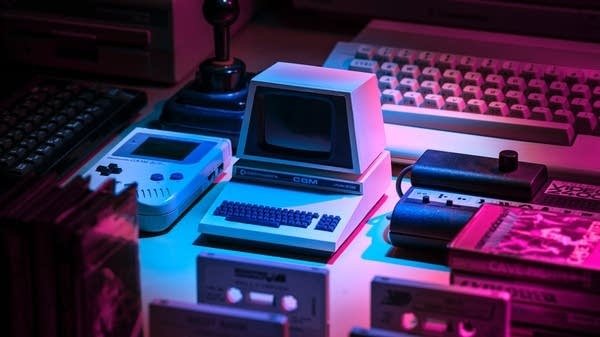In the relentless, high-velocity stream of the digital age, where news cycles are measured in minutes and today’s flagship smartphone is tomorrow’s forgotten relic, a peculiar anomaly exists. Tucked away in a quiet corner of the internet, accessible through the unassuming URL techoldnewz.in, is a website that operates on a different temporal plane. This is not a portal to the future, showcasing bleeding-edge prototypes or speculative AI. Instead, it is a deliberate, lovingly curated digital time capsule—a museum of momentous tech announcements, celebrated launches, and the seismic shifts that have collectively built our modern world. Techoldnewz.in is a sanctuary for those who wish to understand not just where technology is going, but where it has been, reminding us that every revolutionary device of today stands on the shoulders of the giants of yesterday.
More Than Just Archives: The Philosophy of Contextual Retrospection
The internet is littered with archives. One can easily find old articles through search engines or the Wayback Machine. So, what makes Techoldnewz.in different? Its value proposition is not merely storage, but context. The site operates on a core philosophy: to understand the present and anticipate the future, one must deeply comprehend the past. It posits that the true impact of a technological breakthrough is often only visible in hindsight.
When you read a contemporary review of the first iPhone in 2007, it is often filled with awe but also with telling limitations—the critique of the lack of a physical keyboard, the astonishment at a device that was just one piece of glass. Techoldnewz.in collects these moments and frames them with modern commentary. An article about the launch of the Nokia 3310 isn’t just a re-posted press release; it’s an analysis of why its legendary durability and week-long battery life became a cultural touchstone in an era of planned obsolescence. This contextual retrospection provides a richer, more nuanced understanding of tech evolution, highlighting not just the successes but also the fascinating dead-ends and “what were they thinking?” failures that are equally instructive.
A Journey Through the Digital Decades: Navigating the Site’s Structure
The genius of Techoldnewz.in lies in its intuitive and immersive structure. It is not a bland, chronological list. Instead, it invites exploration through carefully designed thematic pathways, allowing users to dive deep into specific eras, product categories, or industry-shifting events.
The “Eras” Section: This is the backbone of the site. Visitors can step into a digital recreation of a specific period. Clicking on “The Dot-Com Bubble (1997-2001)” presents you not only with news of skyrocketing startups and infamous crashes but also with the cultural zeitgeist—the dial-up modem sounds, the aesthetic of early web design, and the profound sense of both optimism and panic. Similarly, the “Mobile Revolution (2005-2012)” section chronicles the fierce battle between BlackBerry, Nokia’s Symbian, and the eventual ascent of iOS and Android, complete with contemporary advertisements and product comparison articles that now read like prophecies.
The “Product Hall of Fame & Infamy”: This section is a crowd favorite. Here, legendary devices like the Sony Walkman, the IBM ThinkPad, the iPod, and the Canon 5D Mark II (the camera that revolutionized indie filmmaking) are enshrined with their original launch specs, pricing, and a detailed analysis of their legacy. Conversely, the “Infamy” wing is a delightful gallery of misfires—Microsoft’s Zune, Google Glass (in its initial consumer push), the Facebook Phone, and the spectacular failure of the Amazon Fire Phone. Each entry serves as a masterclass in product design, market timing, and consumer psychology.
The “Op-Ed Time Machine”: Perhaps the most intellectually stimulating section is the collection of opinion pieces and predictions from the past. Reading a 1995 article confidently predicting that the internet was a passing fad for academics, or a 2008 piece asserting that netbooks would forever replace laptops, is a humbling experience. It forcibly reminds us that even the most expert predictions can be wildly off-base, a crucial lesson for anyone navigating today’s hype cycles around the Metaverse or Artificial General Intelligence.
The Launch that Shook the World: A Case Study from Techoldnewz.in
To truly appreciate the depth of Techoldnewz.in, let’s examine a hypothetical case study as it would be presented on the site: The Launch of the Apple iPhone – January 9, 2007.
A modern article might simply summarize the event. Techoldnewz.in, however, reconstructs the experience. The page layout might mimic the web design of 2007. The primary source is the original keynote video, embedded for viewing. Alongside it, you find a collection of reactions:
- The Skeptics: Quotes from tech CEOs and analysts who dismissed the iPhone as an overpriced toy without a keyboard, doomed to fail in a business-centric market dominated by BlackBerry.
- The Acolytes: Blog posts from early adopters who instantly recognized the paradigm shift, marveling at the capacitive touchscreen and the concept of a device that was a platform, not just a phone.
- The Competitors’ Response: A timeline showing how Nokia, then the market leader, initially downplayed the threat, followed by their panicked, fragmented attempts to create a touchscreen competitor.
- The Legacy Analysis: The site’s own modern commentary would tie it all together, explaining how the iPhone didn’t just create the smartphone market; it killed the stand-alone GPS device, crippled the point-and-shoot camera industry, and gave birth to the app economy, fundamentally altering commerce, social interaction, and media consumption.
This multi-faceted approach doesn’t just tell you that the iPhone launched; it makes you feel the tectonic plates of the industry shifting in real-time.
The Educational Power of Looking Back: Why Techoldnewz.in Matters
In a world obsessed with the “next big thing,” why should we invest time in the “last big thing”? The answer is that Techoldnewz.in serves as a vital educational tool for a new generation of tech enthusiasts, entrepreneurs, and students.
For aspiring product managers, the site is a treasure trove of case studies. Why did the iPod succeed where the Rio PMP300 failed? What can the failure of Webvan teach today’s hyper-fast delivery startups? The lessons in supply chain, marketing, and user experience design are all there, learned not from abstract theory but from visceral, real-world examples.
For journalists and analysts, it provides a crucial historical baseline. It helps them identify genuine innovation versus iterative updates and tempers the hype by showing how similar cycles of excitement and disappointment have played out before. Understanding the trajectory of 3D TVs in the 2010s, for instance, provides a valuable framework for analyzing the potential mainstream adoption of VR headsets today.
The Human Element in a Digital World: Nostalgia and Connection
Beyond its educational and analytical value, Techoldnewz.in taps into a powerful, often overlooked aspect of technology: nostalgia. Technology is not just circuits and code; it is deeply intertwined with our personal histories. The sound of a Windows 95 startup chime can transport someone back to their childhood. The sight of a Tamagotchi can evoke memories of middle school.
The site’s community forums are a testament to this. Users share stories of their first computer, the agony of a failed download on a 56k modem, or the thrill of playing Snake on their Nokia. This shared nostalgia creates a sense of community and connection, reminding us that the history of technology is, ultimately, a history of human experience, aspiration, and sometimes, folly. It grounds the often cold, impersonal subject of tech in the warm, messy reality of human life.
The Future of the Past: Challenges and Opportunities
Maintaining a project like Techoldnewz.in is not without its challenges. The digital landscape is ephemeral; old websites vanish, images break, and video links go dead. The site’s curators act as digital archaeologists, painstakingly preserving and restoring these fragments of our digital heritage. There are also copyright considerations when republishing old articles and media, requiring a careful balance between fair use and respectful curation.
Looking ahead, the opportunities are immense. The site could incorporate more interactive elements—emulators that let users experience old software or operating systems, or VR recreations of historic tech trade shows like COMDEX. Collaborations with museums and academic institutions could further cement its role as a premier resource for tech history.
Conclusion: An Indispensable Beacon in the Fog of Progress
In the end, techoldnewz.in is more than a website; it is a statement. It is a pushback against the tech industry’s inherent amnesia, a conscious effort to preserve the collective memory of the digital revolution. In a sea of clickbait headlines and fleeting trends, it stands as a lighthouse, offering perspective, wisdom, and a much-needed dose of humility. It teaches us that innovation is not a linear sprint but a complex, winding journey filled with brilliant ideas, spectacular failures, and unexpected consequences. For anyone who has ever been excited about a new gadget, wondered how we got here, or simply felt a pang of nostalgia for a simpler digital time, Techoldnewz.in is not just a interesting diversion—it is an indispensable guide to the very soul of the technological world we have built and continue to inhabit.










